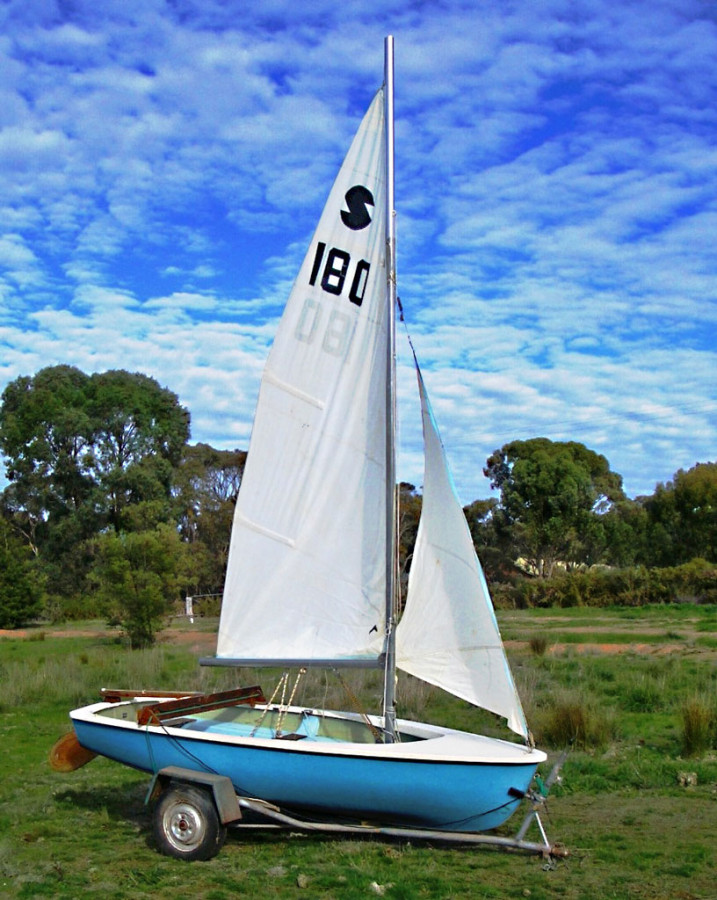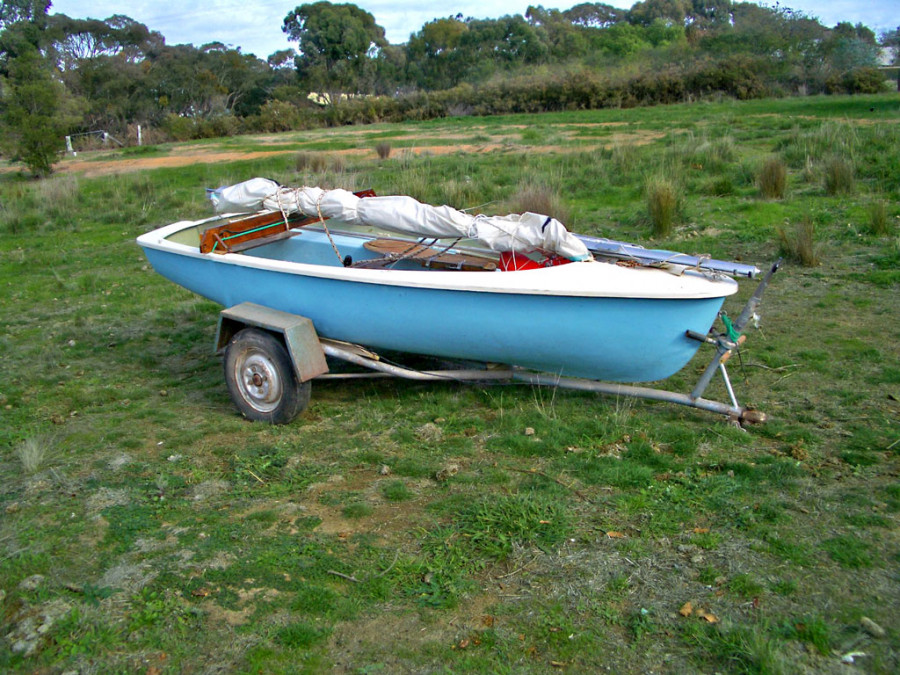Instant Yacht Rigging
Sailing a dinghy can be a lot of fun, but rigging it before launching is tedious and time-consuming. Worse still, when you’ve finished sailing, wet through and cold, is the de-rigging, especially if you’re running late.
So, with few simple innovations this fiberglass “Sparrow” was modified to simplify the task. The main change was to insert a joint in the mast just above the attachment point of the shrouds. The bayonet/sleeve type joint enabled the upper mast section to be simply plugged into the lower portion. No need for fixings, the tension from the mainsail and its halyard keeps the joint firmly together, but easily pulled apart after slackening the halyard. Likewise the boom/mast fitting was modified to be a plug and socket fitting, no fixings, held firm by outhaul tension, and easily pulled apart.
So when the day’s sailing was over, simply slackening the mainsail halyard and outhaul enabled the upper mast section and boom to be pulled apart and laid side by side, sails still attached. Then it was just a matter of folding the sails neatly, with rigging wires gathered together, making a neat bundle secured with Bungee cord ties. Just like furling an umbrella. No shackles to undo with wet cold fingers, in fact no tools needed at all.
A bonus was that the mast/boom sail bundle, shorter than the dinghy, could fit comfortably within the hull. This eliminated the usual problem with masts and trailers where overhang at the bow prevents opening the rear door/hatch of the tow car, and any overhang at the stern is vulnerable to damage. Much easier to manoeuvre and park too.
The trailer is worth a mention too. Swing axles and coil springs enable the boat to sit much lower, enabling launching/recovery in shallow water. The trailer only needs knee deep water, and the tow car remains high and dry on the ramp. On the road the low centre of gravity means more stability, and an unobstructed rear view mirror.




